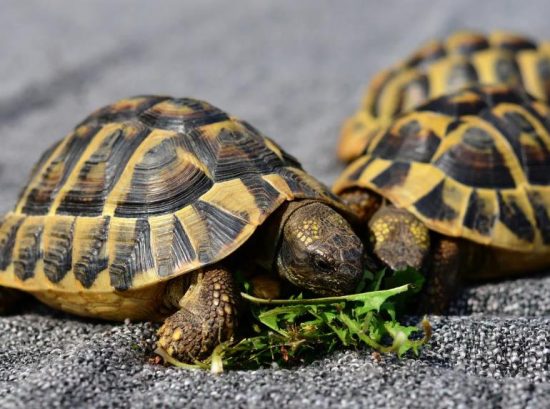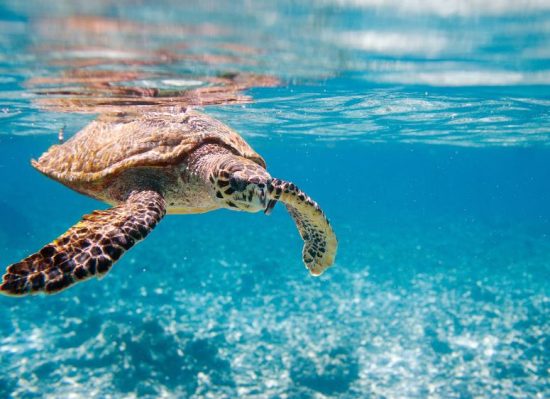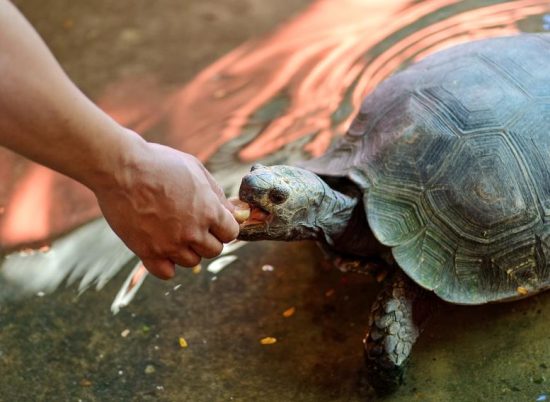How Long Do Turtles Live? Find Out the Average Lifespan
Explore the fascinating lifespan of turtles and discover how long these amazing creatures can live in the wild and as cherished pets.

Turtles and tortoises, fascinating reptiles belonging to the chelonian group, have long intrigued both researchers and enthusiasts. But have you ever wondered how long do turtles live? Can they really surpass a century or even more? Let’s uncover the average lifespan of turtles and challenge common beliefs surrounding their longevity.
The Fascinating World of Turtles and Their Lifespan

Turtles are fascinating creatures that inhabit both land and water. They are known for their unique shells and slow movements. Turtles belong to the reptile family and are known for their long lifespans. Understanding the lifespan of turtles is crucial for pet owners to provide the best care possible.
Turtles come in various species, each with its own distinct characteristics and habits. From the sea turtles that traverse the vast oceans to the land-dwelling tortoises that roam the Earth’s surface, there is a wide range of turtle species to explore. Whether you’re captivated by the green sea turtle’s grace or the Galapagos tortoise’s impressive size, learning about different turtle species offers an exciting glimpse into the animal kingdom’s diversity.
Alongside their intriguing physical features, turtles are also known for their exceptional lifespans. While it is essential to understand the specific lifespan of each turtle species, it is generally recognized that turtles can live for many decades, with some species even exceeding a century. Their long-lived nature has captivated the curiosity of scientists and nature enthusiasts alike, inspiring research into the factors that contribute to their impressive longevity.
From the majestic leatherback turtle to the tiny painted turtle, each species has its own set of unique qualities and lifespans. By delving deeper into the lifespan of turtles, we can gain insights into their biology, ecology, and requirements for optimal care. The next sections will provide a comprehensive exploration of these aspects, shedding light on the fascinating world of turtles.
Understanding Turtle Biology and Longevity
Turtles and tortoises are fascinating creatures with unique characteristics and lifespans. As chelonians, they belong to the reptile family and possess distinct differences. Turtles are known to inhabit both land and water environments, while tortoises are strictly land-dwelling.
The biology of turtles plays a significant role in their longevity. These resilient creatures have adapted to various ecosystems, showcasing remarkable survival abilities. From their intriguing shells to their slow movements, turtles have evolved to thrive in their respective habitats.
Additionally, the environment in which turtles live can greatly impact their lifespan. Factors such as temperature, humidity, and access to resources can influence their overall well-being and long-term health. Understanding the intricacies of turtle biology and their environmental needs is essential for ensuring their longevity.
Diving into Species-Specific Lifespans
Different species of turtles and tortoises have varying lifespans. It is important to understand the lifespans of different species when considering pet ownership or studying these fascinating creatures. Let’s explore the lifespans of aquatic turtles, land-dwelling tortoises, and popular pet turtles and tortoises.
How Long Do Aquatic Turtles Typically Live?

Aquatic turtles, such as red-eared sliders and map turtles, are known for their ability to live both in water and on land. In captivity, these turtles typically have an average lifespan of 20 to 30 years. With proper care, some individuals have been known to live even longer. Providing a suitable habitat with clean water, a balanced diet, and adequate space to swim and bask is crucial for their well-being and longevity.
The Age Range of Land-Dwelling Tortoises
Unlike their aquatic counterparts, land-dwelling tortoises, like the leopard tortoise and Greek tortoise, spend their entire lives on land. These tortoises are known for their impressive lifespans, with some individuals living well over 100 years. Proper husbandry, including appropriate nutrition, a spacious and enriching habitat, and regular veterinary care, contributes to the longevity of these remarkable creatures.
Examining Lifespans of Popular Pet Turtles and Tortoises
When choosing a pet turtle or tortoise, it is essential to consider their expected lifespan. Some popular pet turtle species, such as the painted turtle and the yellow-bellied slider, have an average lifespan of 20 to 30 years with proper care. On the other hand, tortoise enthusiasts often choose species like the sulcata tortoise and the Russian tortoise, which can live for several decades or even more than a century. Knowing the lifespan of your chosen pet species will help you provide the best care and ensure a lifelong companionship.
The Age-Old Question: Can Turtles Live Up to 100 or Even 1000 Years?
There is a common belief that turtles can live exceptionally long lives, with some claims of up to 100 or even 1000 years. While it is true that turtles have long lifespans compared to many other animals, these claims are often exaggerated. Understanding the factors that contribute to a turtle’s lifespan is essential to debunking this myth.
Turtles, like all living creatures, have a natural lifespan determined by various factors such as genetics, environment, and care. While some species of turtles have been known to live for several decades, it is important to note that reaching the age of 100 or 1000 years is exceptionally rare for turtles.
Factors such as genetics play a significant role in a turtle’s potential lifespan. Some species are naturally inclined to live longer than others due to their genetic makeup. However, it is crucial to remember that genetics alone cannot guarantee a turtle’s longevity.
The environment in which a turtle lives also affects its lifespan. Turtles require a suitable habitat with appropriate temperature, humidity, and access to food and water. A well-maintained environment can contribute to a turtle’s overall health and potentially extend its lifespan.
Care is another important factor in a turtle’s lifespan. Providing a balanced and nutritious diet, regular veterinary check-ups, and proper handling all contribute to a turtle’s well-being. Neglecting these aspects of care can have a negative impact on a turtle’s health and potentially shorten its lifespan.
While it is unlikely for turtles to live up to 100 or 1000 years, they still have the potential to live longer than many other animals. By understanding the factors that contribute to their lifespan and providing appropriate care, turtle owners can ensure that their beloved pets enjoy long and healthy lives.
Factors That Affect a Turtle’s Lifespan
A turtle’s lifespan is influenced by a combination of genetic factors and environmental conditions. While genetics can play a role in longevity, proper care and environmental factors are typically more significant. Providing optimal care, including appropriate diet, housing, and temperature control, can greatly impact a turtle’s lifespan.
Genetic Influence vs. Environmental Factors
Genetic factors can contribute to a turtle’s lifespan, as certain species are naturally predisposed to live longer than others. For example, giant tortoises like Jonathan and Adwaita are known for their extended lifespans, with genetics playing a significant role. However, it’s important to note that genetics alone do not determine the entirety of a turtle’s lifespan.
The environment in which a turtle lives plays a crucial role in its longevity. Factors such as temperature, humidity, and access to clean water can greatly impact their overall health and lifespan. Turtles require specific environmental conditions that mimic their natural habitats to thrive and live a long life.
The Role of Care in Turtle Longevity

Proper care and husbandry practices are vital for ensuring the longevity of pet turtles. By providing a balanced and nutritious diet, owners can support the overall health and well-being of their turtles. Nutritional deficiencies can have adverse effects on a turtle’s health and lifespan, so it’s important to feed them a variety of foods that meet their dietary requirements.
Housing also plays a crucial role in a turtle’s longevity. Turtles need appropriate enclosures with adequate space, both on land and in water. Ensuring a clean and well-maintained habitat helps prevent the onset of diseases and infections that can shorten a turtle’s lifespan.
Temperature control is another key factor in promoting a turtle’s longevity. Different species have specific temperature preferences, and maintaining the right temperature range is essential for their physiological processes. Providing the appropriate heat sources, such as basking spots and water heaters, helps turtles regulate their body temperature and maintain good health.
| Factors Affecting Turtle Lifespan | Genetic Influence | Environmental Factors | Care Impact |
|---|---|---|---|
| Explanation | Genetics play a role in a turtle’s potential lifespan. | Environmental conditions, such as temperature and humidity, greatly affect a turtle’s health and longevity. | Proper care, including nutrition, housing, and temperature control, significantly impacts a turtle’s lifespan. |
How Long Do Turtle Live? Responsible Pet Ownership
Owning a pet turtle is a long-term commitment that requires responsible pet ownership to ensure the well-being and longevity of your companion. Meeting the dietary needs of turtles and providing appropriate housing and temperature control are essential factors in promoting a healthy and happy life for your pet.
Dietary Needs of Turtles and Tortoises

To ensure the optimal health and longevity of your pet turtle, it is crucial to provide a well-balanced diet. Different species of turtles and tortoises have specific dietary requirements, so it is essential to research and understand the specific needs of your pet. A diet primarily consisting of commercially available turtle food, supplemented with fresh vegetables and occasional protein sources, will help support their nutritional needs.
The Importance of Housing and Temperature Control
Creating a suitable habitat for your pet turtle is crucial for their overall well-being. Turtles require adequate housing, including an appropriate tank or enclosure that meets their size requirements. The size of the tank should be large enough to allow for swimming and basking areas, as well as providing hiding spots for your pet turtle.
Temperature control is also vital for maintaining the health of your pet turtle. Different species have different temperature requirements, so it is essential to provide a warm basking area and a cooler area in the tank to allow your turtle to regulate their body temperature. Proper heat lamps and thermometers can help you monitor and maintain the optimal temperature range for your pet turtle.
By ensuring proper housing and temperature control, you can create a comfortable and safe environment where your pet turtle can thrive.
Creating an Optimal Environment for Turtle Health and Longevity
To promote optimal health and longevity in turtles, creating an environment that meets their specific needs is essential. This includes providing proper nutrition and vitamin supplementation to meet their dietary requirements. Additionally, UV light exposure plays a crucial role in a turtle’s health, as it aids in calcium metabolism and overall well-being.
Providing Proper Nutrition and Vitamin Supplementation
Turtles require a balanced and nutritious diet to thrive. Incorporating a variety of foods such as leafy greens, vegetables, fruits, and commercial turtle pellets can provide essential vitamins and minerals. It is important to research the dietary needs of your specific turtle species and consult with a veterinarian to ensure they are receiving adequate nutrition.
Vitamin supplementation is also crucial for turtle health. Turtles, like humans, need certain vitamins and minerals to support their bodily functions. Vitamin D3, for example, aids in calcium absorption, which is vital for healthy bone growth and shell development. Consult with a reptile veterinarian to determine the appropriate type and dosage of vitamin supplements for your turtle.
UV Light Exposure and Its Crucial Role
UV light exposure is vital for a turtle’s overall health and well-being. In their natural habitat, turtles bask in the sun to absorb UVB rays, which stimulate the production of vitamin D3. This process helps turtles metabolize calcium and maintain strong bones and shells.
As a responsible turtle owner, providing UVB light in their enclosure is crucial to mimic natural sunlight. You can achieve this by using specialized reptile UVB bulbs or UVB-producing fluorescent tubes. According to the manufacturer’s instructions, place the UVB light within the appropriate distance from the basking area to ensure your turtle receives the necessary UVB exposure.
Remember to monitor the UVB bulb regularly and replace it as recommended by the manufacturer. Even if the bulb appears visually functional, UVB output may decrease over time.
Record Breakers: Tales of the Oldest Living Turtles
Throughout history, there have been accounts of exceptionally long-lived turtles. These record-breaking turtles serve as examples of the potential lifespan that turtles can achieve. Stories of centenarian turtles showcase the remarkable resilience and longevity of these fascinating creatures.
Historical Accounts of Centenarian Turtles
One notable centenarian turtle that has captured attention is Jonathan. Jonathan is an Aldabra giant tortoise and is believed to be one of the oldest living turtles in the world. This magnificent creature resides on the island of Saint Helena and is estimated to be over 187 years old. Jonathan’s longevity is a testament to the well-documented lifespan of Aldabra giant tortoises, making them one of the most notable centenarian turtle species.
Another remarkable turtle species known for their longevity is the Greek tortoise. These small tortoises are known to live for well over 100 years. Their slow growth rate and ability to adapt to various environments contribute to their impressive lifespan. Greek tortoises have become popular pets due to their manageable size and long lifespan.
Jonathan and Other Notable Tortoises
Jonathan, the famous Aldabra giant tortoise, is not the only notable tortoise in history. There have been recorded stories of other long-lived tortoises that have fascinated people worldwide:
| Tortoise | Species | Age | Location |
|---|---|---|---|
| Mzee | Seychelles giant tortoise | 187+ | Haller Park, Kenya |
| Tu’i Malila | Aldabra giant tortoise | >192 | Tonga |
| Tu’i Malila | Aldabra giant tortoise | >192 | Tonga |
These remarkable turtles and tortoises have captured the imagination of people throughout history, showcasing the incredible potential for longevity in these ancient reptiles. Their stories continue to inspire awe and admiration for the oldest living turtles.
Veterinary Care and Enrichment: A Recipe for a Happy, Healthy Turtle
Combining proper veterinary care and enrichment activities is the key to enhancing your turtle’s quality of life. Regular check-ups and preventive measures will ensure your turtle remains healthy, while enrichment activities will keep them mentally stimulated and prevent boredom.
FAQs on How long do turtles live
What factors affect a turtle’s lifespan?
A turtle’s lifespan is influenced by a combination of genetic factors and environmental conditions. While genetics can play a role in longevity, proper care and environmental factors are typically more significant.
How long do pet turtles live?
Pet turtles can live for several decades or more. The lifespan of a pet turtle depends on factors such as species, care, and environmental conditions. With proper care, many pet turtles can live up to 30 years or longer.
Do turtles really live for hundreds of years?
While turtles have long lifespans compared to many other animals, claims of turtles living for hundreds or even thousands of years are often exaggerated. Most species of turtles have lifespans ranging from 10 to 150 years.
How can I extend my turtle’s lifespan?
To promote longevity in turtles, provide proper care including a balanced diet, suitable housing, and appropriate temperature control. Regular veterinary check-ups and environmental enrichment can also contribute to a turtle’s overall well-being and lifespan.
Can turtles live up to 500 years?
No, claims of turtles living up to 500 years are not supported by scientific evidence. While some species of turtles can live for several decades or even over 100 years, claims of such extended lifespans are often exaggerated.
What is the oldest animal?
The oldest animal on record is the ocean quahog clam, which lived to be 507 years old. While turtles have long lifespans, they do not typically live like this clam species for several centuries.








